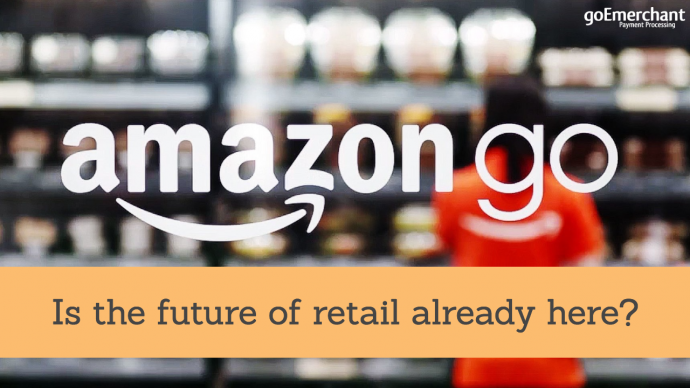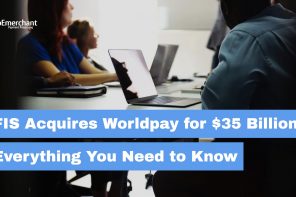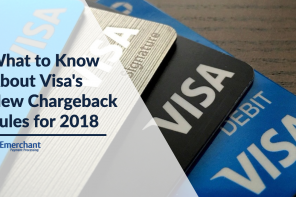Amazon didn’t earn the title of world’s largest retailer by chance. When CEO Jeff Bezos saw the opportunity to enter an eCommerce space that was quickly gaining ground, it was about much more than eCommerce – it was about the customer experience.
At the heart of the customer experience was payments, even if it wasn’t apparent when the company first launched. In traditional physical retail, customers pick out their goods and wait in line to pay. Plain and simple. Except sometimes there can be unexpected delays that come from both the customer and the cashier. The concept of Amazon Go transforms that customer experience by completely eliminating the cashier – and the wait.
When Bezos’ team launched this concept to the wider public in early 2018, which quickly spread to big cities all around the country, this once again wasn’t completely about retail. It was about how to use more advanced payments technology to innovate the retail experience. It’s the same idea Amazon has done at its physical bookstores: Let customers checkout without having to think about checkout.
How Amazon Go is Innovating Retail Payments
Once Amazon got in the physical retail space, it was clear their streamlined payments model would accompany the move. The ability to quickly checkout without having to get out a credit card has always been a bread-and-butter feature that’s contributed to Amazon’s success. Now it’s applying an even more seamless concept to the physical retail space.
What Amazon is doing to retail is the opposite of most companies approach. Amazon built a proven a model online, and then applied it to physical storefronts. Many retailers today are shutting down storefronts to focus online. Amazon’s philosophy has continually advanced Amazon Pay. First, it allowed consumers to checkout in a few clicks, and then it went to one-click. Now, it’s taking to the brick-and-mortar ecosystem by storm by making payments invisible.
For Amazon, retail and payments have always been one equation. Instead of using retail as a way to make money, it used payments as a way to grow its retail presence. Collectively, this is changing the way retailers think about payments and the way payments companies think about retail.
Amazon Go and the Retail Customer Experience
A significant component of Amazon’s model has always been centered on transparency and trust. The eCommerce giant is clear about how it collects payments, and it emphasizes the security features (such as tokenization) to keep credentials safe. For merchants who use Amazon Pay, these terms are also publicly available.
What Amazon Go allows customers to do is to walk into their local Amazon Go Store, and the technology can sense what you added to a cart. Once the customer confirms the purchase, they can walk out of the store without having to stand in line or think twice about payments. Of course, this may raise some security concerns to those who aren’t keen on paying with a mobile app, but so far Amazon’s strategy has been paying off.
The plans for Amazon Go is to be in six cities this year, but there have been rumors that Bezos has even grander plans: As many as 2,000 stores nationwide. This is on top of its already expanding plans for Amazon Books’ physical stores, which rely on a similar checkout technology that allows customers to buy a book without checkout out at a kiosk.
Amazon’s physical storefronts are merely building off its online success. Books were Amazon’s foundation, so it makes sense that the company was able to get into the physical bookstore space. Grocery has been a newer addition to Amazon, but it has proven to pay off, at least on the physical goods side. The latest earnings data on online consumer packaged food items sales hit $650 million in 2018’s first quarter. That’s a 48 percent year-over-year increase.
Amazon hasn’t always had success on the grocery side. Its other venture, Amazon Fresh, didn’t pan out, as the company reportedly faced inventory and delivery issues. However, with its Whole Foods acquisition, it was clear that Amazon wanted to continue transforming the grocery retail experience. It wasn’t long after that Amazon Go became a concept.
The secret to Amazon’s growth online and in physical stores can always tie back to the customer experience. Whether it’s online or at its physical stores, Amazon has taken the wait time and friction out of the payment experience. That translates into customers who are more likely to return and is a model you might soon see other significant retailers attempting to duplicate. Amazon’s payments technology is expected to play a role in the spread of the “invisible payment experience” that’s made its growth possible.
Customers are demanding more out of their retail experience. They want to spend less time in stores, and less time checking out. That’s what’s helped propel the growth of eCommerce. Amazon has caught onto this trend and used it to its advantage in both the online and physical retail ecosystem. Retailers who want to compete in this increasingly crowded space should start paying attention if they aren’t already.
Amazon’s dabble in payments has been growing since 2013, and now it’s a major revenue-driver for the company. The eCommerce giant recently launched its Global Partner Program in hopes of encouraging more retailers to use its payments platform that allows shoppers to pay using an Amazon login. Based on its growth in retail, it’s likely Amazon Pay will eventually have a large presence in the retail ecosystem.




